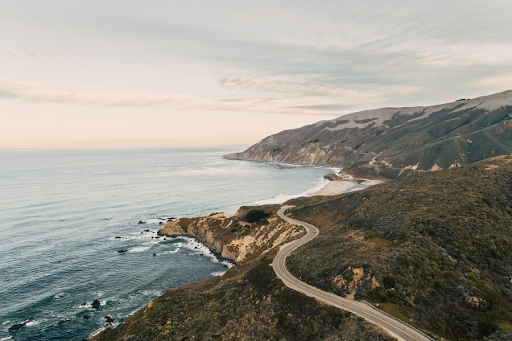The Great Ocean Road, stretching along the southeastern coast of Australia, is one of the most iconic and breathtaking drives in the world. Known for its stunning coastal views, dramatic cliffs, lush rainforests, and charming towns, this route offers a perfect blend of nature, adventure, and culture. Whether you’re a local or a visitor, a day tour along the Great Ocean Road is a must-do experience. This ultimate guide will help you plan your journey, highlighting key stops, travel tips, and everything you need to know to make the most of your adventure.
Planning Your Great Ocean Road Adventure
Best Time to Visit
The best time to embark on a Great Ocean Road day tour depends on what you’re looking to experience. The road is beautiful year-round, but the seasons bring different advantages:
- Spring (September to November) and Autumn (March to May) are ideal times to visit, with mild weather, blooming wildflowers, and fewer tourists. The temperatures are pleasant, making it perfect for outdoor activities and sightseeing.
- Summer (December to February) offers warm weather and long days, but it can be crowded, especially at popular stops like the Twelve Apostles. If you visit during this time, consider starting your journey early to avoid the peak crowds.
- Winter (June to August) provides a quieter experience, with fewer tourists and dramatic seascapes. The cooler weather is ideal for those who enjoy a peaceful drive and want to witness the rugged beauty of the coast in a different light.
What to Bring on Your Day Tour
To make your Great Ocean Road day tour comfortable and enjoyable, it’s essential to pack the right items. Here’s a quick checklist of travel essentials:
- Clothing: Wear layers to adapt to changing weather conditions. A windbreaker or light jacket is recommended, especially if you plan to walk along the coast.
- Footwear: Comfortable walking shoes are a must for exploring scenic spots and hiking trails.
- Sunscreen and Sunglasses: Even on cloudy days, the UV rays can be strong along the coast.
- Camera or Smartphone: You’ll want to capture the stunning landscapes and iconic landmarks along the way.
- Snacks and Water: While there are cafes and restaurants along the route, it’s a good idea to have snacks and water on hand, especially for the longer stretches between stops.
- Map or GPS: Although the Great Ocean Road is well-signposted, a map or GPS can help you navigate and plan your stops efficiently.
Must-Visit Stops Along the Great Ocean Road
Iconic Landmarks and Scenic Spots
The Great Ocean Road is renowned for its natural landmarks, each offering breathtaking views and photo opportunities:
- The Twelve Apostles: Perhaps the most famous stop along the route, these limestone stacks rise majestically from the Southern Ocean, offering a stunning view, particularly at sunrise or sunset.
- Loch Ard Gorge: Located just a short drive from the Twelve Apostles, Loch Ard Gorge is a dramatic site with towering cliffs, a beautiful beach, and a rich history tied to the shipwreck of the Loch Ard in 1878.
- The Grotto: A natural rock formation that creates a picturesque frame for the ocean, offering a unique vantage point and a tranquil spot for reflection.
Hidden Gems and Lesser-Known Locations
Beyond the well-trodden paths, the Great Ocean Road hides several secret beaches and secluded viewpoints that are worth exploring:
- Gibson Steps: Just before reaching the Twelve Apostles, these steps lead down to the beach, offering a different perspective of the towering rock formations from sea level.
- The Bay of Islands: Located further along the coast, this less-visited area features a series of limestone stacks and cliffs, similar to the Twelve Apostles but with fewer crowds, making it a peaceful alternative.
- Maits Rest Rainforest Walk: This short, easy walk through a cool temperate rainforest is a great way to experience the lush, green side of the Great Ocean Road, complete with ancient trees and diverse flora.
Activities to Enjoy on the Great Ocean Road
Outdoor Adventures and Nature Experiences
The Great Ocean Road is not just about the drive; it’s also a gateway to outdoor adventures and nature experiences:
- Hiking Trails: There are numerous trails to explore, ranging from short walks to more challenging hikes. The Great Ocean Walk is a multi-day trek that runs parallel to the road, offering stunning coastal views and the chance to experience the region's diverse landscapes up close.
- Wildlife Spotting: Keep an eye out for native Australian wildlife, including kangaroos, koalas, and echidnas. The Kennett River area is known for its koala population, making it a great spot to see these iconic animals in their natural habitat.
Local Culture and Culinary Delights
Along the Great Ocean Road, you’ll find charming towns and villages that offer a taste of local culture and cuisine:
- Apollo Bay: This seaside town is a popular stop for lunch, offering a variety of cafes and restaurants serving fresh seafood and local produce. Don’t miss the opportunity to try some of the region’s famous fish and chips.
- Port Campbell: Close to the Twelve Apostles, Port Campbell is a great place to sample local dairy products, including artisan cheeses. Visit the Timboon Distillery nearby for a taste of locally produced whisky and liqueurs.
- Local Markets: If your visit coincides with a market day, be sure to stop by and explore the local arts, crafts, and fresh produce.
Tips for Navigating the Great Ocean Road
Driving Safely on Coastal Roads
Driving the Great Ocean Road is a rewarding experience, but it requires attention and care due to its winding roads and changing weather conditions:
- Drive on the Left: Remember that in Australia, you drive on the left side of the road. Take extra caution when navigating the tight bends and blind corners along the coast.
- Watch for Wildlife: Be aware of wildlife, particularly at dawn and dusk when animals like kangaroos and koalas are most active. Slow down and stay alert, especially in rural areas.
- Take Breaks: The Great Ocean Road can be a long drive, so it’s important to take regular breaks to rest and enjoy the scenery. There are plenty of lookouts and picnic spots along the way where you can stretch your legs.
Managing Time and Avoiding Crowds
To make the most of your day tour and avoid the crowds, consider these time management tips:
- Start Early: Begin your journey early in the morning to beat the rush at popular stops like the Twelve Apostles. This also allows you to enjoy the peaceful morning light and capture stunning photographs.
- Plan Your Stops: While it’s tempting to stop at every viewpoint, prioritize the stops that interest you the most. This will give you more time to explore each location without feeling rushed.
- Visit Off-Peak: If possible, plan your trip during the shoulder seasons (spring and autumn) or on weekdays to avoid the busiest times. This will give you a more relaxed experience and better access to attractions.
Conclusion
The Great Ocean Road is more than just a drive; it’s a journey through some of Australia’s most spectacular coastal landscapes, rich in history, natural beauty, and local culture. With careful planning and a sense of adventure, you can make the most of your day tour and create lasting memories of this iconic Australian route. Whether you’re drawn to the dramatic cliffs, the serene beaches, or the vibrant local towns, the Great Ocean Road promises an unforgettable experience. Use this guide to help plan your trip, ensuring you capture the full essence of this incredible destination.
FAQs About the Great Ocean Road
How long does it take to drive the Great Ocean Road start to finish?
The Great Ocean Road spans about 243 kilometers (151 miles) from Torquay to Allansford. Without stops, the drive takes approximately four to five hours. However, to fully experience the route and its attractions, it’s recommended to spend at least a full day, if not more.
Are there any recommended tour operators for the Great Ocean Road?
Yes, several tour operators offer guided day trips from Melbourne, including Go West Tours and Wildlife Tours Australia. These tours typically include transportation, commentary, and stops at key attractions, making them a convenient option for those who prefer not to drive.
What are the top safety tips for driving the Great Ocean Road?
Drive on the left, keep a safe distance from other vehicles, and be cautious on winding roads, especially in wet conditions. Take regular breaks, watch for wildlife, and avoid driving at night when visibility is lower, and animals are more active.
Can the Great Ocean Road be enjoyed during the winter months?
Yes, winter offers a quieter experience with fewer tourists and dramatic, moody seascapes. Just be prepared for cooler temperatures and potential rain. Dress warmly and consider starting your journey a little later in the day to avoid the early morning chill.



